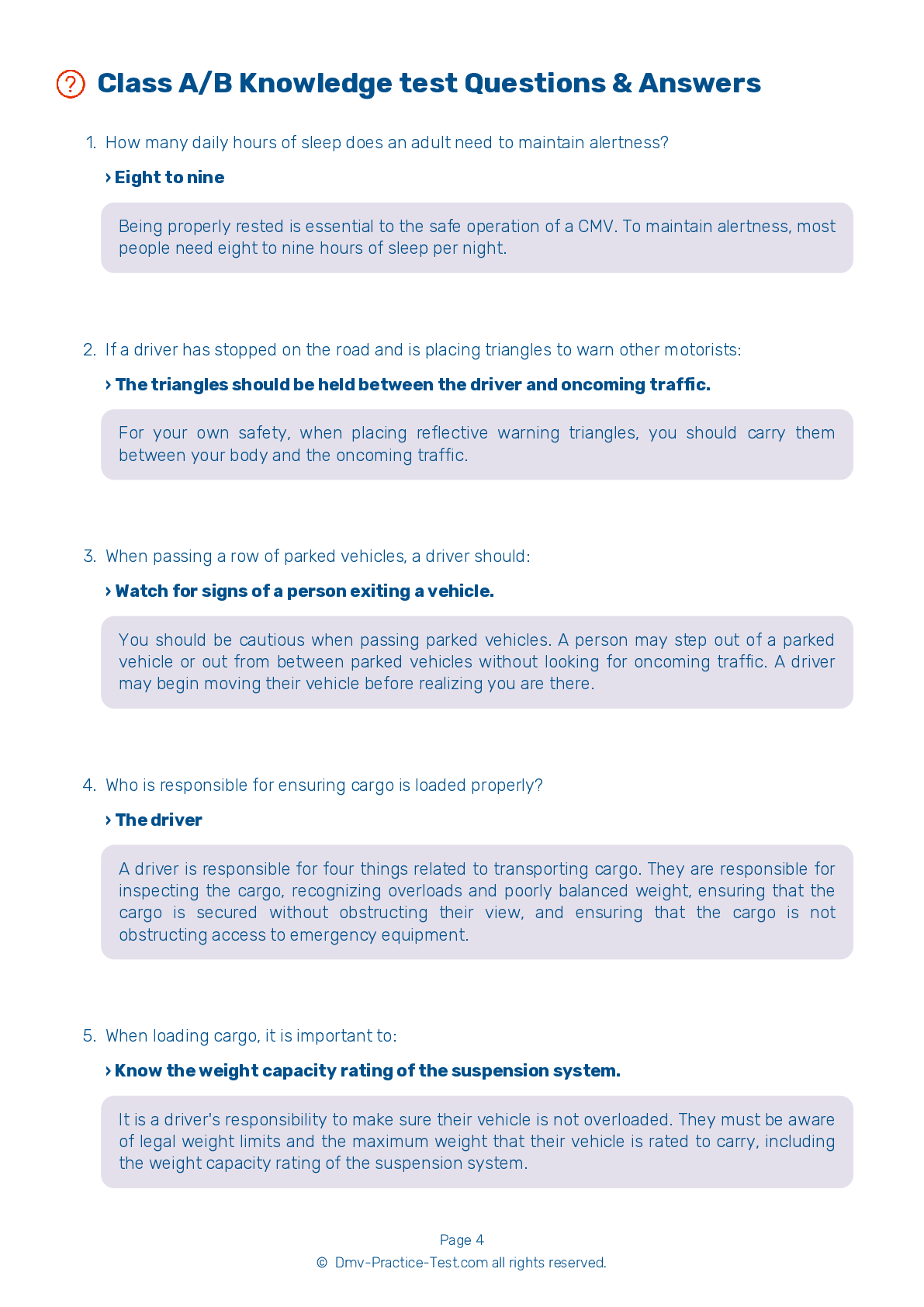Bus Driver Testing | Virginia 2025 #2 Page 3 of 3
Train for FREE online with our VA bus CDL test. The official exam test consists of several obligatory parts, with all of them checking your knowledge of different blocks of road rules. If you need to obtain a license in Virginia in 2025, learn how to become a bus driver and then practice as much as possible. Free sample tests published on our website will help you check and improve your knowledge and boost your grades. Please bear in mind that DMV requirements for a bus driver may vary from state to state.
15 . When students are being picked up by a school bus:
A school bus driver should load and unload students only at designated stops that have been approved by appropriate school district officials.
16 . If you are stopped at a railroad crossing while operating a school bus, you should:
When stopped at a railroad crossing while operating a school bus, do not rely only on signals to tell you if a train is approaching. You should silence all passengers, open the front door, and look and listen for trains. After a train has passed, you should check for another train approaching from either direction before you proceed across the tracks.
17 . The overhead rearview mirror is located:
In a school bus, the overhead rearview mirror is mounted directly above the windshield on the driver’s side.
18 . Properly adjusted flat mirrors on a school bus should allow the driver to see ____ behind the bus.
Proper mirror adjustment is vital to the safe operation of a school bus. A bus's flat mirrors should be adjusted so the driver is able to see 200 feet, or four bus lengths, behind the bus.
19 . When making a stop to pick up students, a driver should ensure all surrounding traffic has stopped before:
When stopping to pick up students, a school bus driver should ensure that all surrounding traffic has stopped before opening the door and signaling for the students to approach the bus.
20 . School buses:
Most commercial vehicles manufactured after 1998 or 1999 are required to be equipped with Anti-Lock Braking Systems (ABS). Many older buses are also equipped with ABS.
See the exact questions that will be on the 2025 Virginia DMV exam.
99.2% of people who use the cheat sheet pass the FIRST TIME
Lillian MCcranie explains how our CDL study guide was helpful in passing the exam and recommends it to everyone.
Cameron tells us how he purchased the CDL exam, and found it to be a useful tool which helped him pass the exam and find a job.



